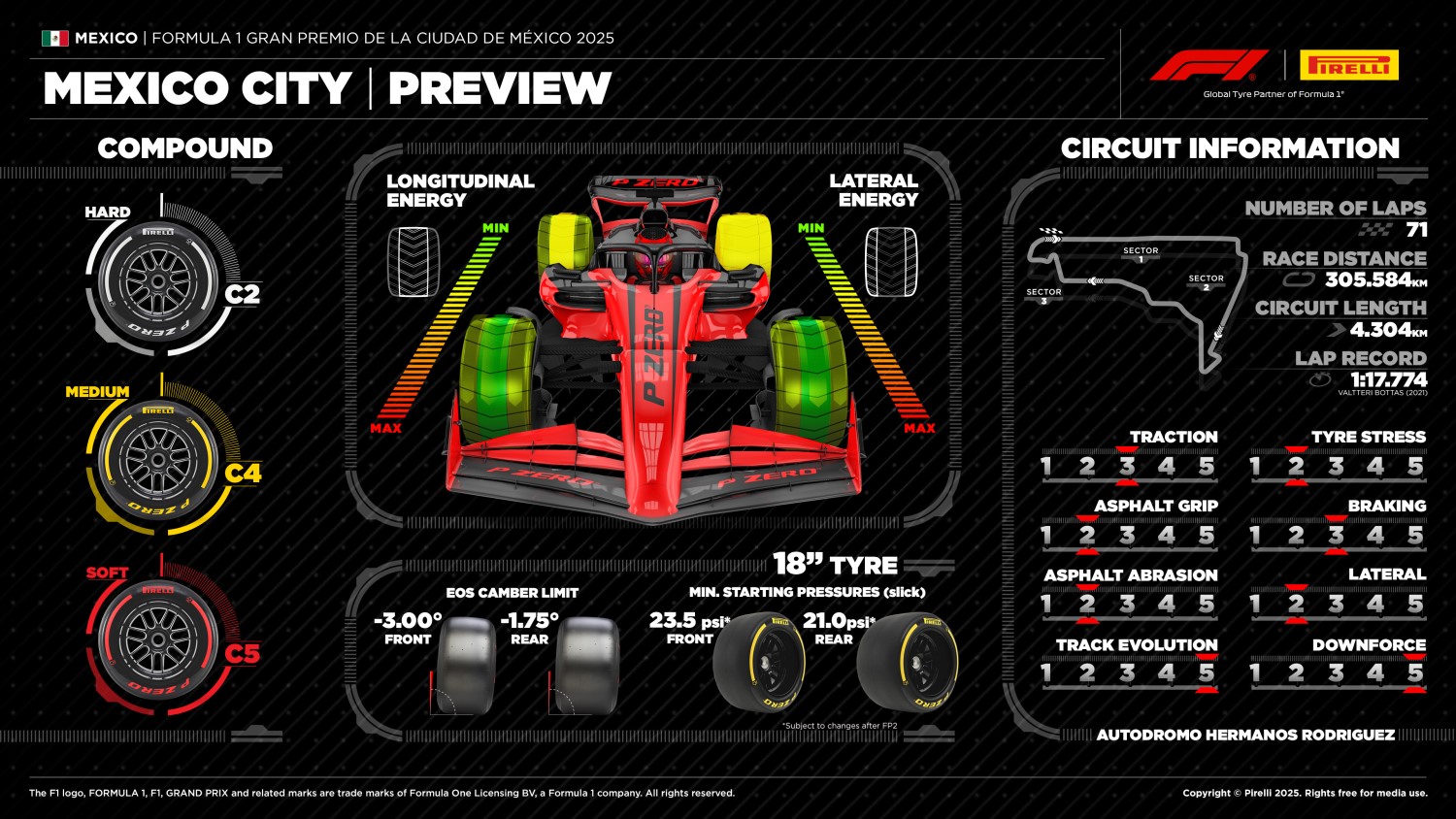Formula 1 News: 2025 Mexico City GP Preview
Fresh off the intense battles at the United States GP in Austin last weekend, Formula 1 heads south to the vibrant chaos of Mexico City for Round 20 of the 2025 season: the Gran Premio de la Ciudad de México at Autódromo Hermanos Rodríguez (October 24-26).
–by Mark Cipolloni–
This iconic 4.304 km, 17-turn circuit—named after Mexico’s legendary racing brothers Pedro and Ricardo Rodríguez—first hosted a championship race in 1963 as Autódromo Magdalena Mixhuca. After stints from 1963-1970 and 1989-1992, it returned triumphantly in 2015, blending historic parkland sprawl with the roaring energy of the 30,000-seat Foro Sol stadium section. It’s F1’s most electric party: frenzied crowds, cultural flair, and a Día de los Muertos vibe amplifying the spectacle.
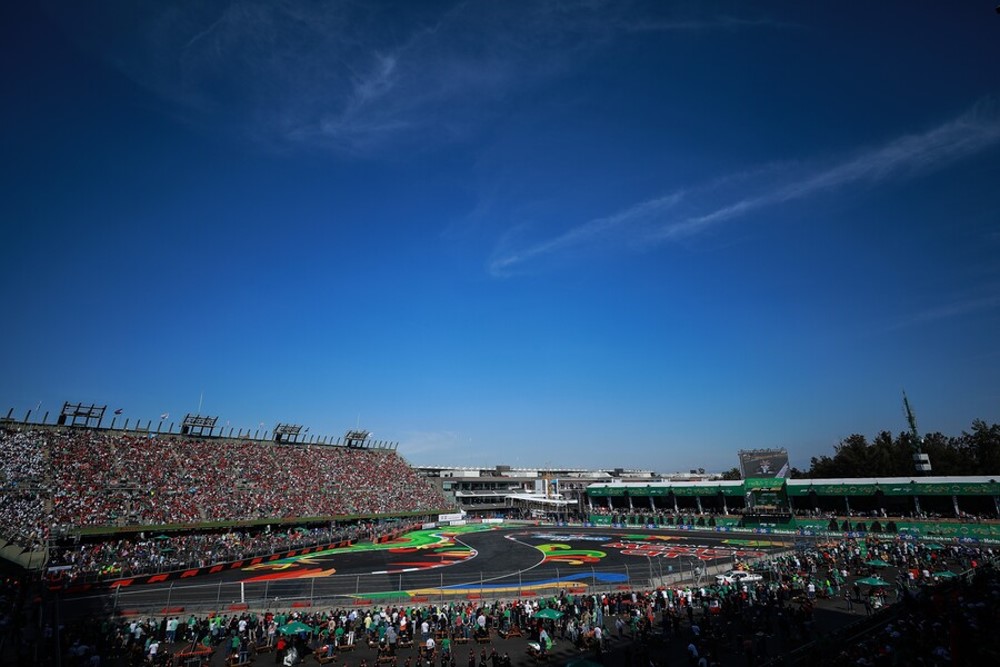
Track Breakdown: High Speeds, Thin Air, Tricky Twists
The layout kicks off with a 1.2 km front straight—F1’s longest run from pole to Turn 1 (811 meters)—feeding into a high-speed chicane and the flowing Esses (Turns 7-11), where reduced downforce demands precise throttle control to avoid slides. The stadium finale twists through slow corners beneath the arena, rewarding bold exits onto the pit straight.
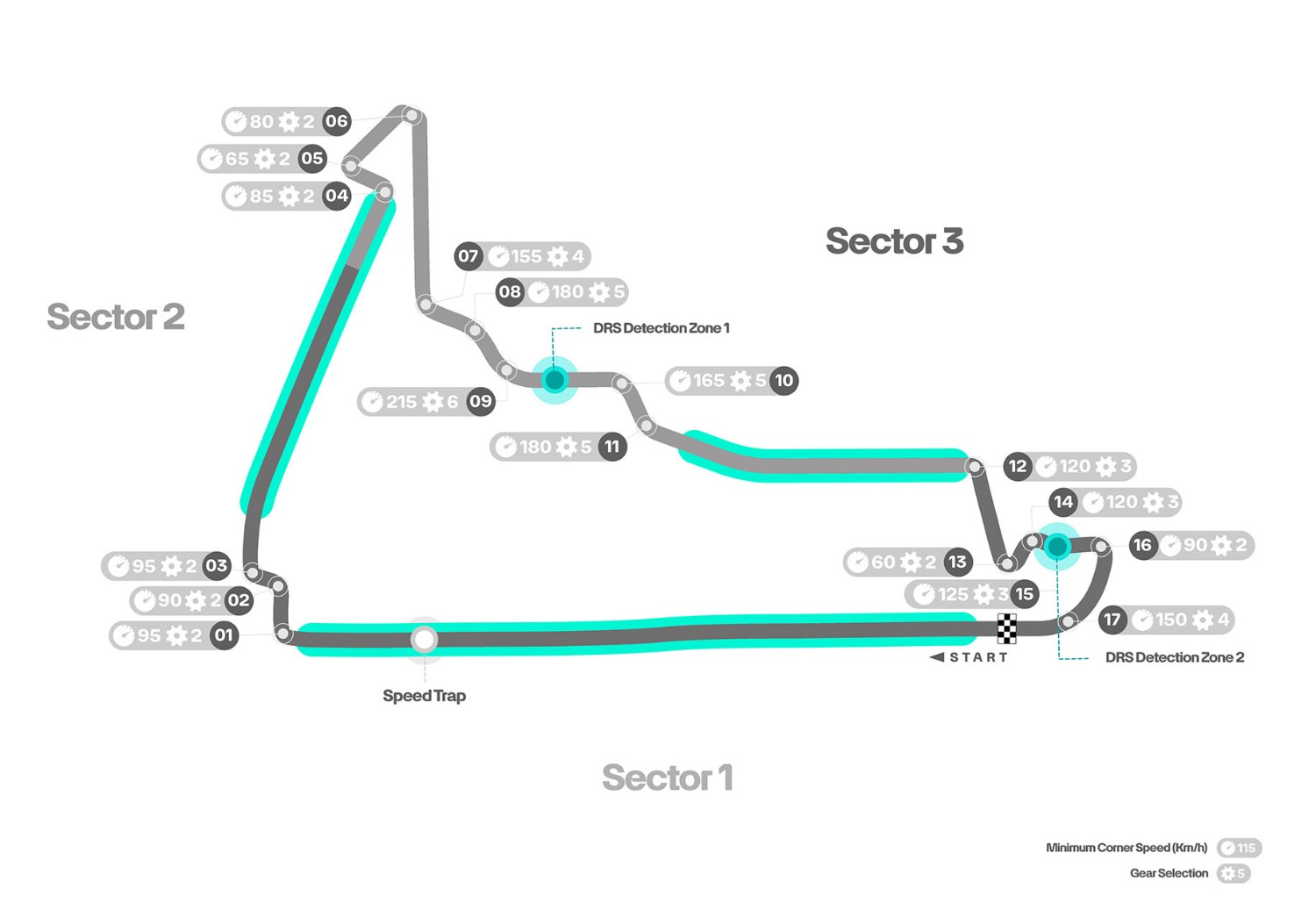
But the real star? Mexico City’s 2,260-meter elevation, the highest on the calendar. Thinner air (782 mb pressure, 78% sea-level oxygen) boosts straight-line speeds to 346+ km/h (rivaling Vegas) with a 10% power gain, yet slashes downforce (Monaco-level wings for Monza-like grip), hampers cooling for engines and brakes, spikes tire graining from sliding, and taxes drivers physically—hello, altitude sickness risks.
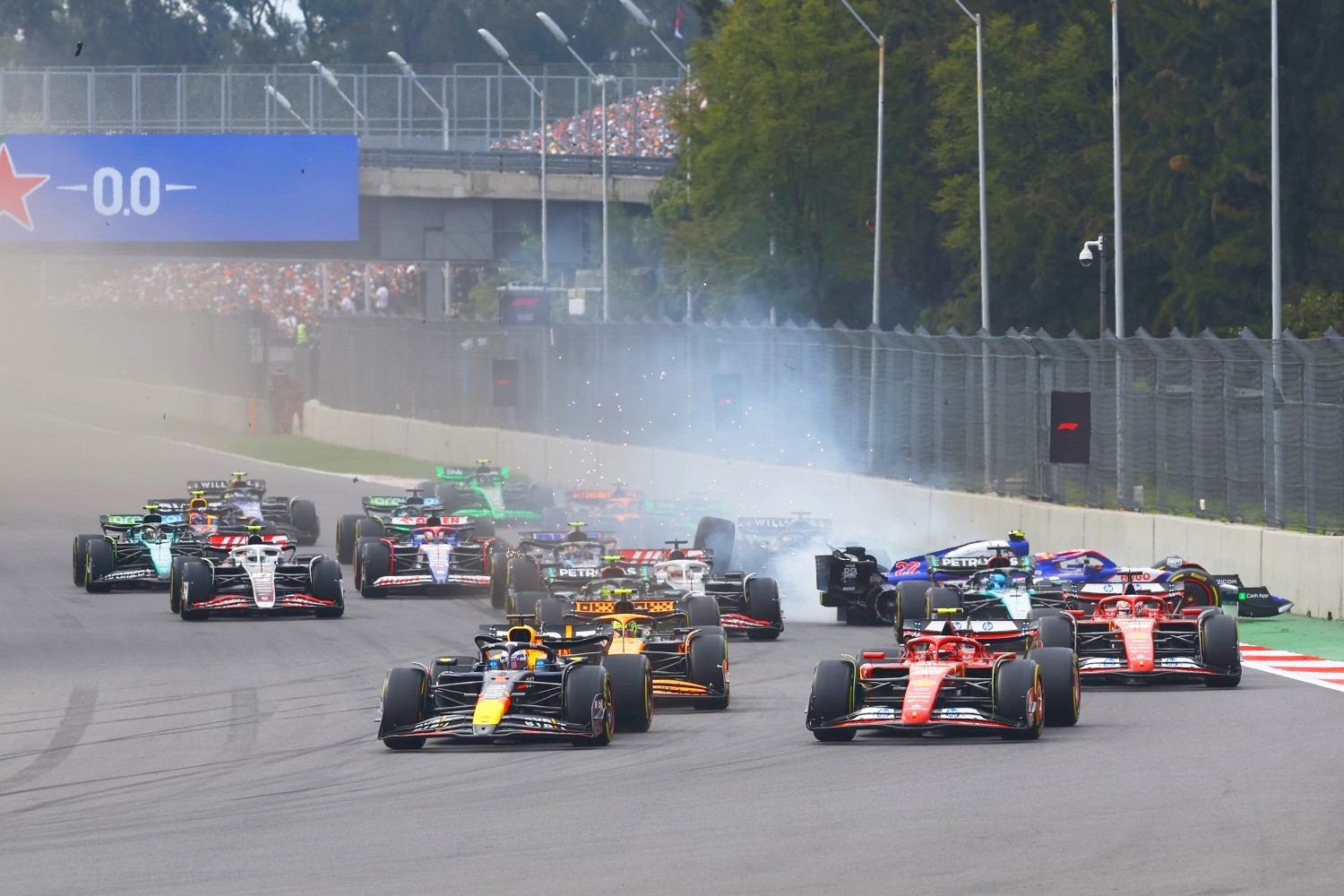
Overtaking’s tough despite three DRS zones: Low density weakens slipstreams and DRS effects. Race interruptions are common (one Safety Car, six VSCs in the last five GPs), often from overheating or lock-ups at Turn 1. Gear changes? Just 35 per lap, the season’s fewest. The smooth, low-grip surface “rubbers in” over the weekend, but watch for wheel lock-ups on cooling straights.
Key corners to nail:
– Turn 1: Blinding braking into a compromised chicane exit.
– Esses (7-11): High-speed reliance on aero, with Turn 10 a stability nightmare.
– Turns 16-17 (Mansell): Sharp rights setting up the long straight.
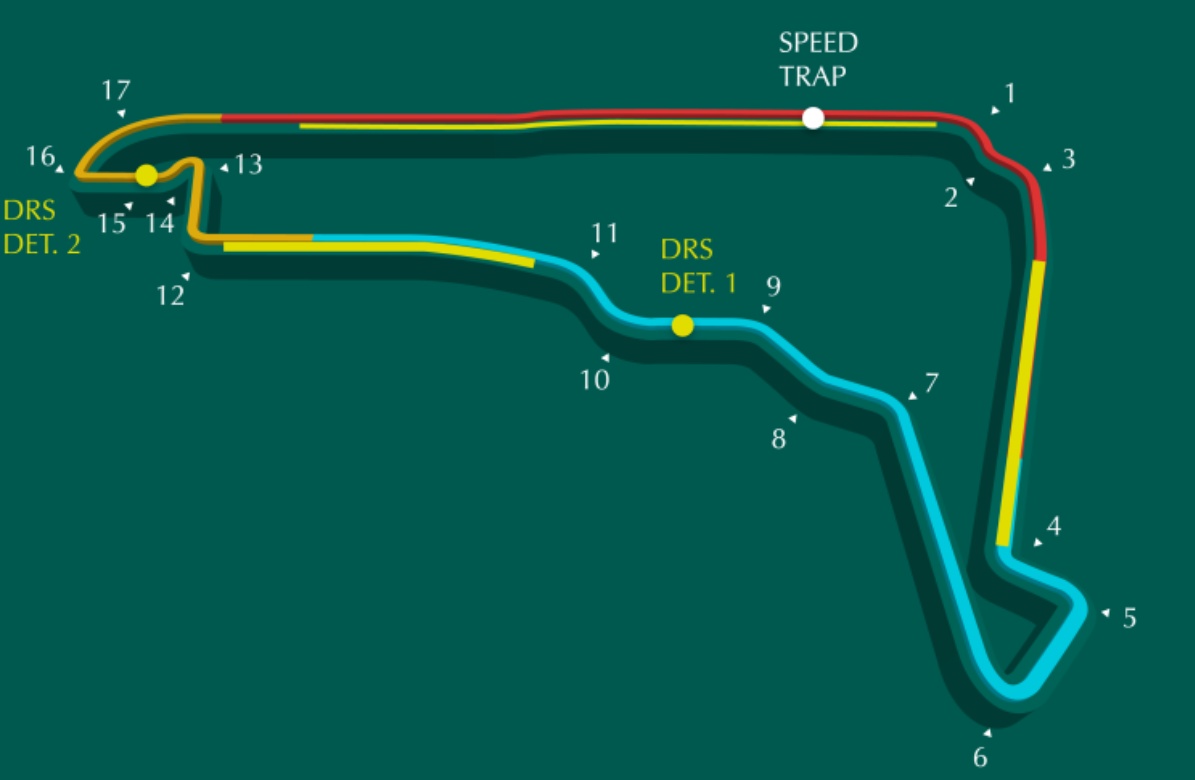
Championship Stakes: McLaren’s Intra-Team Thriller, Red Bull’s Lurking Threat
McLaren’s orange army has turned the 2025 title fight into an intra-team thriller. Oscar Piastri holds a slender 14-point lead over teammate Lando Norris (346-332) after Norris’s P2 in Austin sliced into the gap, but the Australian’s consistency has kept him atop the standings through 19 rounds. Max Verstappen lurks 40 points back in third (306), his Red Bull showing flashes of the old dominance but plagued by setup woes—could the high-altitude boost (up to 10% more power from thinner air) unlock the RB21’s potential here?
In constructors, McLaren’s 678 points tower over the field, but Mercedes (341) and Ferrari (334) are nipping at Red Bull’s heels (331), turning the midfield scrap into a potential podium lottery. George Russell, fresh off a strong Singapore showing, eyes back-to-back momentum to haul Mercedes closer, while Charles Leclerc and Lewis Hamilton will be desperate to exploit any McLaren slip-ups in the scarlet machinery.
What to Watch: Battles, Disruptions, and Strategy Gambles
– Title Crunch: Piastri-Norris harmony vs. Verstappen’s win-or-bust push (five races left).
– Midfield Fireworks: Williams’ Alex Albon eyes upsets; Ferrari-Mercedes duel for scraps.
– Interruptions & Overtakes: Expect VSCs from cooling woes; DRS drama on the main straight.
– Bold Call: Verstappen poles and victories, trimming Piastri’s lead amid McLaren interteam battle.
– Pirelli’s allocation skips a beat: C2 hard (conservative, low-grip for long stints), C4 medium, C5 soft. Historically one-stop, but softs’ pace tempts riskier two-stops via degradation—graining’s high from low downforce and sliding. Teams test long runs in practice; masters of tire management thrive. Last year’s Turn 12-15 resurface aids, but lock-ups remain a tire-killer.
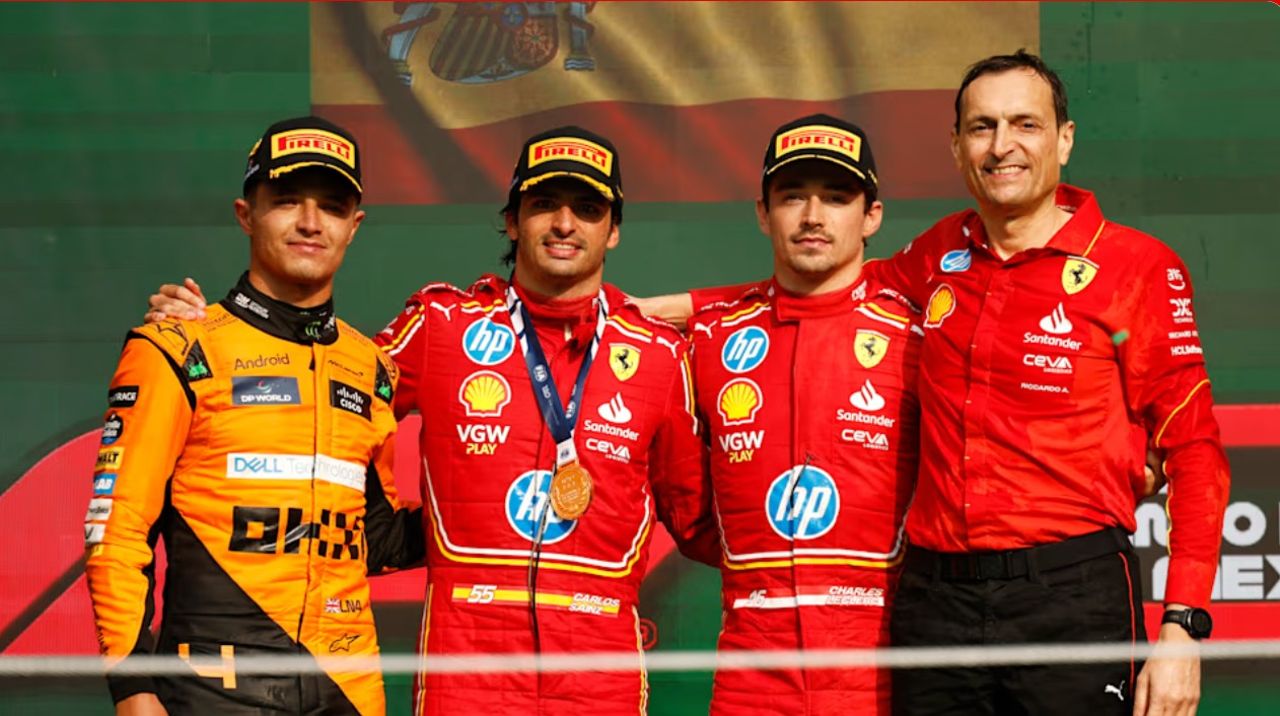
Betting Odds: Verstappen the Favorite in a Tight Field
Bookmakers have Max Verstappen as the clear frontrunner to win in Mexico City, buoyed by Red Bull’s historical strength here and the altitude edge. Here’s a snapshot of winner odds from major sportsbooks (as of October 21, 2025; American format, subject to change):
| Driver | DraftKings | Oddschecker | Tips.GG |
| Max Verstappen | +175 | +137 | +125 |
| Lando Norris | +200 | +275 | +225 |
| Oscar Piastri | +250 | +400 | +333 |
| George Russell | +1400 | +1800 | +1400 |
| Charles Leclerc | +1400 | +2000 | +1600 |
Previous Mexican GP F1 Race Winners
| Year | Driver | Constructor | Circuit |
|---|---|---|---|
| 1963 | Lotus-Climax | Magdalena Mixhuca | |
| 1964 | Brabham-Climax | ||
| 1965 | Honda | ||
| 1966 | Cooper-Maserati | ||
| 1967 | Lotus-Ford | ||
| 1968 | Lotus-Ford | ||
| 1969 | McLaren-Ford | ||
| 1970 | Ferrari | ||
| 1971 – 1985 |
Not held | ||
| 1986 | Benetton-BMW | Hermanos Rodríguez | |
| 1987 | Williams-Honda | ||
| 1988 | McLaren-Honda | ||
| 1989 | McLaren-Honda | ||
| 1990 | Ferrari | ||
| 1991 | Williams-Renault | ||
| 1992 | Williams-Renault | ||
| 1993 – 2014 |
Not held | ||
| 2015 | Mercedes | Hermanos Rodríguez | |
| 2016 | Mercedes | ||
| 2017 | Red Bull Racing-TAG Heuer | ||
| 2018 | Red Bull Racing-TAG Heuer | ||
| 2019 | Mercedes | ||
| 2020 | Cancelled due to the COVID-19 pandemic | ||
| 2021 | Red Bull Racing-Honda | Hermanos Rodríguez | |
| 2022 | Red Bull Racing-RBPT | ||
| 2023 | Red Bull Racing-Honda RBPT | ||
| 2024 | Ferrari | ||
Rookie Spotlight: FP1 Fresh Faces
Under F1’s 2025 rules mandating two rookie FP1 sessions per car, seven young guns will hit the track Friday morning (12:30pm CST), shaking up the order and injecting fresh energy into setups at altitude. Here’s the lineup, with the regulars they sideline:
| Rookie | Team | Replaces | Key Notes |
| Pato O’Ward | McLaren | Lando Norris or Oscar Piastri | Home hero and McLaren reserve; IndyCar runner-up; second straight Mexico FP1 for vital setup intel. |
| Fred Vesti | Mercedes | George Russell | Dane in his fourth FP1; IMSA winner bringing sim expertise to cool-weather challenges. |
| Antonio Fuoco | Ferrari | Lewis Hamilton | Italian WEC/Le Mans champ; Mexico debut, testing Ferrari’s scarlet steed. |
| Arvid Lindblad | Red Bull | Max Verstappen | British F2 podium hunter (7th in standings); second FP1 after Silverstone sub for Tsunoda. |
| Luke Browning | Williams | Carlos Sainz | Williams academy star; third FP1, third in F2—honing that midfield edge. |
| Jak Crawford | Aston Martin | Lance Stroll | American F2 title contender (2nd); FP1 debut after 2,000+ km of testing. |
| Ryo Hirakawa | Haas | Oliver Bearman | Japanese reserve; fourth FP1 this year, post-Alpine switch—Abu Dhabi next. |
TV Times
All Times Eastern
| Friday, October 24, 2025 | Location | TV Times | Network |
| Formula 1 Mexico City GP Practice 1 | Mexico City | 2:25pm – 3:30pm (Live) | ESPN U |
| Formula 1 Mexico City GP Practice 2 | Mexico City | 5:55pm – 7:00pm (Live) | ESPNews |
| Saturday, October 25, 2025 | Location | TV Times | Network |
| Formula 1 Mexico City GP Practice 3 | Mexico City | 1:25pm – 2:30pm (Live) | ESPNews |
| Formula 1 Mexico City GP Qualifying | Mexico City | 4:55pm – 6:00pm (Live) | ESPNews |
| Sunday, October 26, 2025 | Location | TV Times | Network |
| Formula 1 Pre-Race | Mexico City | 2:30pm – 4:00pm (Live) | ABC |
| Formula 1 Mexico City GP | Mexico City | 4:00pm – 6:00pm (Live) | ABC |
| Formula 1 Post-Race | Mexico City | 6:00pm – 7:00pm (Live Stream) | ESPN+ |
| Formula 1 Mexico City GP | Mexico City | 9:00pm – 11:30pm (Replay) | ESPN2 |
| Formula 1 Mexico City GP | Mexico City | 12:00am -2:30am (Replay) | ESPNews |
Historical Highlights
Max Verstappen reigns with five wins (2017, 2018, 2021-2023); Red Bull matches Mercedes’ haul. Poles? Jim Clark’s four (1960s); recent Ferrari duo—Charles Leclerc (2023), Carlos Sainz (2024, his last victory). Lewis Hamilton owns six podiums, clinching titles here in 2017-2018. Nico Rosberg’s 2015 return win set the modern tone.
Weekend Weather
The 2025 Formula 1 Mexican Grand Prix at Autódromo Hermanos Rodríguez (October 24-26) is set for mostly dry and stable conditions throughout the weekend, with clear to partly cloudy skies and no significant rain expected. Temperatures will be warm during sessions (around 23-27°C), but the circuit’s high altitude (over 2,200 meters) will create thinner air, challenging teams with reduced downforce, higher tire wear, engine cooling issues, and physical demands on drivers. Winds will be light to moderate, unlikely to disrupt racing.Here’s a session-by-session breakdown based on the latest forecasts (as of October 21, 2025). All times are local (CST).
|
Session
|
Air Temp
|
Track Temp
|
Rain Chance
|
Wind Speed & Direction
|
Conditions
|
|---|---|---|---|---|---|
|
Friday, Oct 24 FP1 (2:30pm ET)
|
75°F
|
~95-104°F
|
10%
|
6-15 km/h (N/NW, light)
|
Sunny, dry; humidity ~44%
|
|
Friday, Oct 24 FP2 (6:00pm ET)
|
77°F
|
~104-113°F
|
9%
|
6-10 km/h (N, light)
|
Partly cloudy, dry; humidity ~25%
|
|
Saturday, Oct 25 FP3 (1:30pm ET)
|
73°F
|
~95-104°F
|
0%
|
7-15 km/h (N, light)
|
Sunny, dry
|
|
Saturday, Oct 25 Qualifying (5:00pm ET)
|
79-81°F
|
~113-122°F
|
14%
|
7-25 km/h (N, moderate)
|
Partly cloudy, dry; humidity ~39%
|
|
Sunday, Oct 26 Race (4:00pm ET, 71 laps)
|
77-79°F
|
~113-122°F
|
0-3%
|
9-25 km/h (N, gentle-moderate)
|
Sunny/partly cloudy, dry; humidity ~35%
|
Forecasts are consistent across sources, with minimal variation. No thunderstorms or disruptions anticipated, favoring setup and strategy over weather adaptation.
Fact File: Mexico City Grand Prix
- The Autódromo Hermanos Rodríguez is the third-shortest circuit on the 2023 F1 calendar, behind only Zandvoort and Monaco.
- It does, however, have the longest run from pole position to the first braking zone at 811 meters.
- Mexico City sits at over 2,200 meters altitude, which affects the car in a number of different ways.
- Because of that high altitude and therefore low air density, the air is incredibly thin.
- The ambient pressure is by far the lowest of the season at 782mb.
- The oxygen levels are therefore 78% of what they are at sea level. This has a big impact on the aerodynamics and the Power Unit.
- The nature of the circuit means drivers make only 35 gear changes per lap, the lowest number of the season.
- The ambient pressure is the lowest of the season by far. At 780mb, the oxygen levels are 78% of what they are at sea level, and this has a big impact on different areas of a Formula One car, such as Power Unit performance and downforce.
- Because you can run a Monaco wing level but experience Monza levels of downforce, top speeds in Mexico are some of the highest of the season, where the cars can achieve 346 km/h (or more with a tow). Only Vegas is higher.
- The Autódromo Hermanos Rodríguez still largely follows the original outline of the circuit, which was first developed in 1959.
- The main difference is the former, more fearsome version of the Peraltada corner is now bisected.
- The first championship Grand Prix race took place at the circuit in 1963, before disappearing from the calendar after 1970.
- The second F1 stint at the circuit came between 1989 and 1992, before the championship returned in 2015 with Nico Rosberg victorious for Mercedes.
Into thin air
It’s not something you immediately feel. Altitude sneaks up on you, quietly, invisibly, just like the oxygen that your body craves, and of which it is, partially, deprived. You can go around your day, not feeling a difference, but the change is there: working its way into your lungs, forcing your heart to work a little bit harder. Go for a run, a gym session or a game of tennis, and that’s where it hits you: your body doesn’t respond how it used to, it wants more energy, more fuel, more air.

Ever since sports became science, the effects of high altitude have been studied, analyzed, exploited for performance. From the sprinting world records at the 1968 Summer Olympics to the effect on endurance for those training in the highlands of Kenya (or, for those more inclined to local pursuits, St. Moritz), exercise and competition at altitudes have forged an indissoluble bond with sport.
The rarefied atmosphere affects in particular ways anything that sucks in air, uses it as part of the engine power development, and eventually moves through it as quickly as it possibly can – effectively, anything that a Formula One car does. Just like any athlete, cars struggle a bit more at higher altitudes: cooling is reduced; power output stunted; and downforce much reduced as there’s not as much of the stuff pushing down on the bodywork.
Each of these elements contributes to creating a bigger challenge for engineers, crews and drivers: setups are adapted, with downforce levels not seen since Monaco on a track that very much resembles Monza; mechanics work hard in hypoxic conditions; and drivers, well, have to stop the car with much less downforce that they’d like to have.
There are many striking elements to the Mexican Grand Prix: a week-long celebration of the country, a party atmosphere from day one to well after the checkered flag, thanks to amazing fans and an attentive race promoter, one of the best podiums in the calendar – but the most crucial of all, just like the rarefied air, is one you can’t touch or see. As the championship enters crunch time, with just five races to go, we will all need to adapt to what our hearts do at altitude: work harder and push for our targets.
Pirelli Tires
As was the case in Austin last weekend, for the Mexican round there is again a jump in the compound selection between the hardest of the three and the medium. While the Medium and Soft are the C4 and C5 respectively, as in 2024, the Hard will now be the C2. For the Mexico City track, this compound is an extremely conservative choice, with a considerable delta in terms of lap time compared to the other two, while also offering less grip.
Last year, the Soft only came into play in qualifying and then in the race, only in an attempt to secure the extra point for setting the fastest race lap, but now the scenario could change considerably. The advantage to be had from the C4 and C5 could in fact lead the teams to aim for a race run predominantly on these compounds. However, that comes with the risk of possibly having to make a second pit stop because of degradation. Anyone choosing the C2 could relatively comfortably manage a longer stint, going for a one-stop on the way to the checkered flag, although it entails a reduction in performance.
The use of the two softest compounds will certainly be carefully evaluated during the three free practice sessions, when teams will be able to run long stints with full fuel loads and check the condition of the tyres. Historically, graining levels in Mexico are quite pronounced, since the thin air at altitude reduces the amount of aerodynamic downforce that the cars can produce.
On a track that already offers little grip due to its limited use, the tyres tend to slide, which leads to graining. It will also be interesting to see whether the greater resistance to this phenomenon offered by the current compounds will help limit it and therefore benefit those who are masters of tire management.
The Hermanos Rodriguez track is 4.304 km long, with 17 corners and a surface that is low in terms of its severity on tires. Last year the promoter resurfaced the section between turns 12 and 15 in the third sector.
Mexico City is located at over 2000 meters above sea level and the rarified air has an influence on car performance, reducing the aerodynamic downforce generated by the cars. One of the consequences of this is that top speeds reached are very high, despite a configuration that actually looks typical of tracks that require maximum downforce – the speed record was set here in 2016 when Valtteri Bottas in the Williams-Mercedes was clocked at 372.5 km/h – even if the level of graining is usually quite high. Furthermore, on the longest straights, the main one and the one between turns 3 and 4, the surface temperature of the tires tends to drop pretty quickly and the drivers have to be very careful when braking, especially at turn 1, to avoid locking the wheels and therefore damaging the tires.
The main straight is over 1.2 kilometers long, on which the cars reach very high top speeds, partly down to the minimal downforce. The track surface is very smooth, and at the start of the weekend it does not provide much grip, as it does not get much use. Therefore, it rubbers-in over the three days, which is reflected in improved lap times. Drivers will also need to be careful not to lock up the wheels under braking, due to the tire surface temperatures dropping quickly down the two long straights. Because of its unusual layout, this is also the track where drivers have to change gear the least.
The circuit named in memory of the Rodríguez brothers has hosted 24 editions of the Grand Prix, twenty – the first in 1963 – going by the name of “Mexican Grand Prix” and the last four taking their name from the country’s capital. Max Verstappen is the most successful driver at this track, which explains why Red Bull is among the teams with the most wins in Mexico, with five in total (2017, 2018, 2021, 2022 and 2023).
To find the driver with the most pole positions, one must go back to the 1960s, when Jim Clark, driving for Lotus, took pole four times between 1963 and 1967. The last two poles have gone to Ferrari courtesy of Charles Leclerc in 2023 and Carlos Sainz in 2024. Last year’s race was actually the last time to date that the Spaniard, now with Williams, won a Grand Prix. The Mexican round has also been particularly significant for current Ferrari driver Lewis Hamilton, who celebrated his 2017 and 2018 world titles here, and holds the record for the most podium finishes in this race with six.
